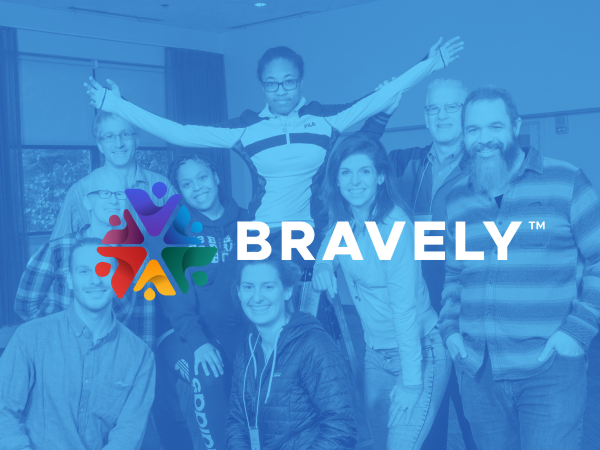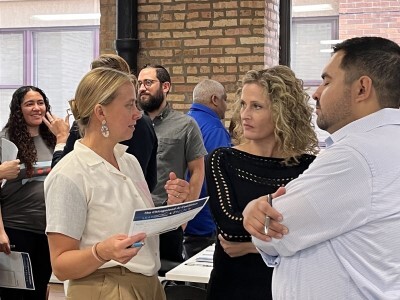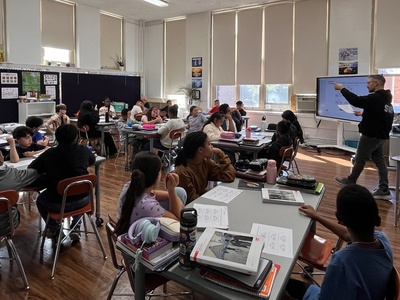Professional Learning
Now, More than Ever, Teacher Meetings and PD Need to Practice What They Preach
Topics

Educators are the lead learners in schools. If they are to enable powerful, authentic, deep learning among their students, they need to live that kind of learning and professional culture themselves. When everyone is part of that experiential through-line, that’s when next generation learning thrives.
Right now, teacher PD should model best practices for remote learning. It will increase engagement, reduce teachers' anxiety, and create space for experimentation.
As I begin my seventh year as a high school teacher in Washington, D.C., 2020 is already shaping out to be a challenge for me both professionally and emotionally. I have been back “at school” for five days, and I’ve spent approximately 25 hours on Zoom calls. There have been some that are more engaging than others, such as working sessions with my grade-level or department, some team bonding where we get put into random breakout rooms and we can talk and just get to know each other or catch up. However, a majority of these Zoom meetings have been someone presenting a series of slides, talking at the staff about some new policy or grading system, and 90 percent of us will have to go back to the slides or one-pager to implement whatever policy they just told us.
If you’re anything like me, you often leave a staff meeting at your school muttering under your breath, “that was a waste of time, the last 45 minutes could have just been an email.” (I don’t know staff meetings in any other profession, but I wouldn’t be surprised if this was the case across the board.) However, within the context of COVID-19 and distance learning, these meetings have been a missed opportunity. I have constantly been told throughout my career that I need to create engaging lessons that limit teacher talk time to increase student engagement. I have been told to give authentic learning experiences for students to engage with the curriculum. I have been told to script my lessons, have my objectives on the board, write the exemplar, model best behavior, use technology effectively, check for understanding, and all the other buzzy “getting better faster” words that come with teacher evaluation. These best practices apply regardless of the learning format (in-person, digital, or a hybrid), but in a time of uncertainty for students, engagement matters even more. So, if this is what administrators want our teachers to do, why don’t they practice what they preach?
This summer, I was fortunate enough to be a fellow with the Modern Classrooms Project. When I applied to this fellowship in December 2019, I wasn’t expecting that just three months later, COVID-19 would shut down my school building and my classroom would be 100 percent online. But in March 2020, remote teaching became the new reality, and figuring out how to create good digital content became the goal of nearly every teacher across the country. With Modern Classrooms, I had the opportunity to reflect on the experience of the spring and a responsive professional development to dive deep into transitioning my class to a blended-learning model with self-paced units and mastery-based grading. The Modern Classrooms model is a solutions-based approach to a problem that every teacher in the country is currently facing.
So after a summer of reimagining what my classroom might look like in a digital-age and beyond, I was disheartened by the lack of innovation in our school’s meetings and professional developments (PD). It was a kick in the stomach after a summer where I was treated like a professional in my professional development: with a morning check-in, a self-paced module, work-time, coaching, and a daily deliverable with action-oriented feedback. It got me thinking, if I ran my remote learning class by clicking through a slide-show and reading off of each slide, I would probably be out of a job. So when I was asked to lead a session on what I learned during the Modern Classrooms fellowship for other teachers in my school, I did just that by following three simple guidelines I set for myself: implement best practices, model the tools, and make face-to-face time count.
Implement Best Practices
In the second paragraph above, I mentioned a whole plethora of education buzzwords on the Getting Better Faster rubric. While the rubric has its flaws, it does provide a common vocabulary to the school staff. I was able to leverage this in my professional development. After all, best practices are best practices! So with that being said, I used the vocabulary and modeled the best practices within each. I defined clear objectives for what teachers should take away from the hour-long session, I wrote a lesson plan and shared it with my colleagues for feedback, I had exemplar units from multiple content areas and made them fully available to staff, and I made sure to have independent practice for the teachers.
If teachers are held to this standard in their classes, as they should be, then professional development should be held the same way. Only a handful of meetings have been clear about their objectives, and even fewer had a deliverable or even an authentic check for understanding. Remote learning is naturally going to look different, so even the most seasoned teachers might be a little lost about using veteran skills in a digital classroom. If administrators modeled these best practices in their meetings and professional developments, there would be more engagement and it would reduce teacher anxiety about what this year might look like.
Model The Tools!
I also wanted to make sure that I wasn’t just talking at teachers for an hour. The objective for the lesson was that teachers would experience how they can immediately apply strategies to develop stronger lessons and more engaging content during asynchronous learning. So the best way to do that was to model it, and that’s exactly what I did.
During the Modern Classroom Fellowship, we learned how to record more engaging lessons, add interactions, and create an effective module in our learning management system (in this case, Canvas). Since this is what I wanted to share during my session, I decided to set every teacher up as a student in Canvas. This took less than five minutes with a whole-staff roster. Once I did that, I created video lessons using Screencast-o-matic and Explain Everything (to model different methods of recording), I added embedded questions using Playposit and EdPuzzle (to show two examples of programs teachers could use), and then I uploaded all of it into Canvas as a self-paced module:

Not only does this method keep teachers engaged and model the practices they should be using in their classrooms, it also serves as a platform for discussion and materials that teachers can come back to again and again.
If more administrators moved to this method of sharing information, there would be many benefits:
- One-Stop Shop: Everything you do during staff orientation and PD lives in one place.
- Modeling: You have the opportunity to model many different tech tools and methods for asynchronous remote teaching.
- Professionalism: We are all at home because of COVID, some of us with little ones, and emergencies happen. If you have to miss a session because life is calling, you don’t miss information.
- Accountability: You can see who has completed their module and who hasn’t, and follow up appropriately.
Make Face-to-Face Time Count
Following the first two guidelines allowed me to rethink the way I would spend the hour that I was given for my session. First, provide teachers with time to interact socially. Students and teachers alike are missing human interaction. One thing my school has been really good at is coming up with creative ways to do team-building digitally. We’ve been starting off every day, and even most sessions, with some sort of fun team-building activity. Examples include name that tune, meme-it, family feud, or codenames, to name a few. This gives multiple opportunities for our team to experience joy in a time when we might be missing the authentic conversations that come with working in a school building.
Second, if the informational portion is pre-recorded, then ensure time for authentic digital collaboration. If you’re recording and sharing the informational part of the meeting or professional development, this leaves more time for authentic digital collaboration. If your PD is about building an effective lesson, have teachers immediately implement the information you shared. In a classroom, you wouldn’t show a student how to find the slope of a line and then immediately change the subject to the American Revolution. Instead, you would give practice, check answers, and pair up students to discuss how they got their answers and the process they took. If this is best practice for classroom instruction, then why do we neglect to implement that in adult instruction? Give teachers time to pair up and share how they might use specific strategies, have them share the work that they did with each other, and have them provide feedback to each other. You might be surprised by the amount of creativity and innovation that happens in your school when you give teachers the time and space to flourish.
Third, after quickly rolling out the objective and instructions for a session, use your video conference platform as a teacher desk! Call teachers to the front, be there for clarification, monitor the “room,” but don’t micromanage. Leave time at the end of a session for share-outs, shoutouts, and questions.
While I understand that sometimes there simply needs to be information given during staff orientation, using these guidelines for some meetings and professional development can lead to three important outcomes:
- Increase Engagement: By making our meetings and PD sessions more self-paced, Zoom time will be used more effectively, and teachers will have more time to implement the information, tools, and skills that are presented throughout the year.
- Decrease Teacher Anxiety: By modeling best practices for using tech tools in an asynchronous lesson, teachers are able to imagine how these tools might be used in the classroom, lowering their nerves for building for a digital classroom.
- Create Space for Experimentation: By giving teachers more opportunities for practice and collaboration, every teacher in your school will be more prepared for day one with students in a digital classroom.
These three simple guidelines of implementing best practices, modeling the tools, and making face-to-face time count are what every administrator is looking for when they are assessing teachers in a digital classroom. So please, practice what you preach.
My PD session is available online. Check it out to see how professional development at schools can be personalized, self-paced, and use best practices.
Photo at top by Anna Shvets.




